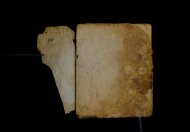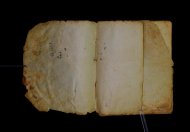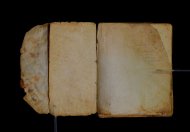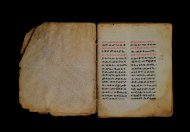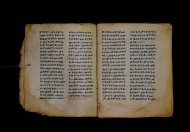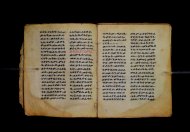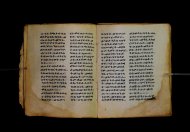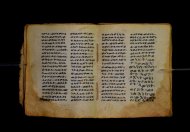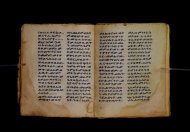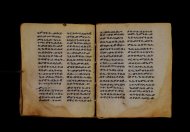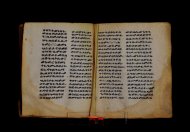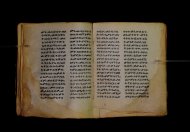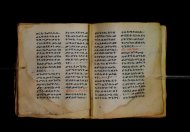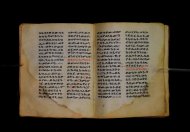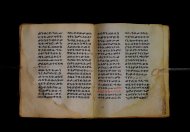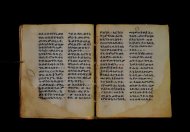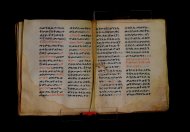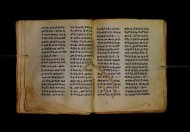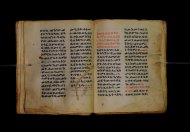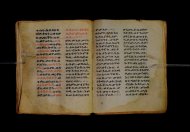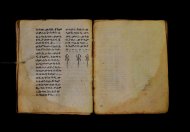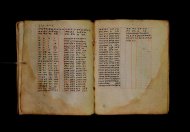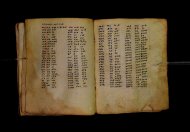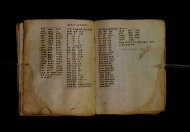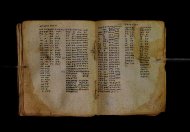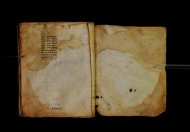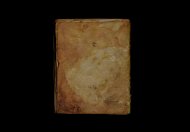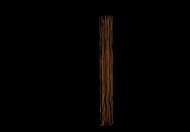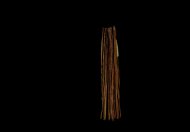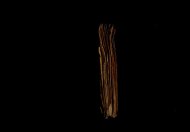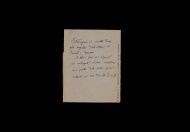|
Shelfmark |
3836 (olim Mordini 175) |
|
Owning institution |
Biblioteca Palatina, Parma |
|
Typology |
Codex |
|
Copying date |
16th century, dated on a paleographical basis. |
|
Title |
Introductory materials to the Four Gospels |
|
Subject |
New Testament |
|
Language |
Gǝʿǝz |
|
Short description of the content |
Ff. 1ra–18rb: Mäqdǝmä wängel (“Introduction to the Gospels”), in seven chapters. Incipit: በስመ፡ አብ፡ … ንቅድም፡ በረድኤተ፡ እግዚአብሔር፡ ይትባረክ፡ እግዚአብሔር፡ ወይትሌዓል፡ ዝክሩ። ዘእምኔሁ፡ ኵሉ፡ ሢመተ፡ ኀይል። ወቦቱ፡ ተፍጻሜተ፡ ኵሉ፡ ስእለት። ወኀቤሁ፡ ምብጻሐ፡ ኵሉ፡ አስተብቍዖት። በጽሕፈተ፡ መቅድመ፡ ፬ወንጌላት፡ ስቡሐን። (!) አቅማራት፡ በሰላመ፡ እግዚአብሔር፡ አሜን። =። Ff. 18rb–19vb: Gǝṣṣawe śǝrʿat (“Synopsis of classes”) Incipit: በእንተ፡ ኅብረተ፡ ቃላት፡ ዘ፬ወንጌላት፡ ግጻዌ፡ ሥርዓት። =። ወእንዘ፡ ይተሉ፡ ረድኤተ፡ ፪ባሕቲቶሙ፡ ጸሐፉ፡ እንከ፡ ወንጌለ፡ እምሐዋርያት፡ ወ፪እመትሎሆሙ፡ ፩ዘጳውሎስ፡ ወ፩ዘጴጥሮስ፡ ዘድአ፡ ዚአሁ። ምስለ፡ ማቴዎስ፡ ወዮ(18va)ሐንስ፡ ጸሐፉ፡ እንከ፡ ወንጌላተ። እንዘ፡ ኢየኀሡ፡ ክብረ፡ ለርእሶሙ። አላ፡ በከመ፡ ይትፈቀድ። Ff. 20ra–21vb: Letter of Eusebius to Carpianus Incipit: አውሴብስ፡ ለቀርጲያኖስ፡ ለዘ፡ አፈቅር፡ እኁየ፡ ፍሥሐ፡ ወዳኅና፡ ለከ፡ እምኀብ፡ አግዚአብሔር። አሞንስ፡ እንከ፡ አለክስንድራዊ፡ በብዙኅ፡ አስተሐምሞ፡ ወጽሂቅ፡ ገብሩ። ወኀደገ፡ ለነ፡ ቃለ፡ ዘከመ፡ ኃብሩ፡ ፬ወንጌል። ወእምዝሰ፡ አርእስተ፡ ምንባባት። =። ወበእንተዝ፡ እንከ፡ መፍትው፡ ጥንቶ፡ ይትልውዎ፡ ከመ፡ ሙሱነ፡ ኢይኩን። ሠለስቱኒ፡ በተሊወ፡ ንበቱ፡ ኢይትኀደግ። Ff. 22v–27v: Śərʿatä qämär zäkämä ḫabru arbaʿǝttu (Canon tables). |
|
Writing material |
Sheep parchment |
|
Outer size (included the binding) |
167 x 137 x 19 mm |
|
Outer size of the textblock |
167 x w 137 x 19 mm |
|
Number of folia |
32 (I–IV + 28) |
|
Blank folia |
Ir–IVv, 22r, 28r–v |
|
Binding |
The boards and the spine cover are missing. Four sewing stations. |
|
Sewing |
Two S-twisted threads (each thread is Z-twisted) of animal origin. |
|
Sewing pattern |
Bozzacchi A1 |
|
Slip case |
– |
|
Quires |
5 (1 initial protective quire + 4) |
|
Quire marks |
– |
|
Layout |
2 columns. |
|
Number of lines per column |
20–22 |
|
Ruling |
Blind ruling, from outside to inside. Lines are written above the ruling. |
|
Ruling pattern |
Nosnitsin 1 |
|
Scribe |
Unknown |
|
Colophon |
– |
|
Additional notes |
– |
|
Decoration |
– |
|
State of preservation of the binding |
Defective. |
|
State of preservation of the textblock |
Mediocre. |
|
Provenance and history |
The manuscript is mentioned by Antonio Mordini in the inventory list of the books of the monastic collection of Gundä Gunde (Mordini, A., 1953. ‘Il convento di Gunde Gundiè’, Rassegna di Studi Etiopici, 12, 29–70, p. 54 n. 13). The manuscript was purchased by Mordini in the early 1940s and became part of his private collection in Barga (Lucca). In 1994 the Italian Ministry for Cultural Heritage bought the collection, which until then had remained the property of the family of Antonio Mordini, who had died in 1975. The collection then entered the Biblioteca Palatina in Parma (cp. Fiaccadori, G., 1995, ‘I manoscritti etiopici di Antonio Mordini’. Malacoda 57 (1995), 24–27). |



